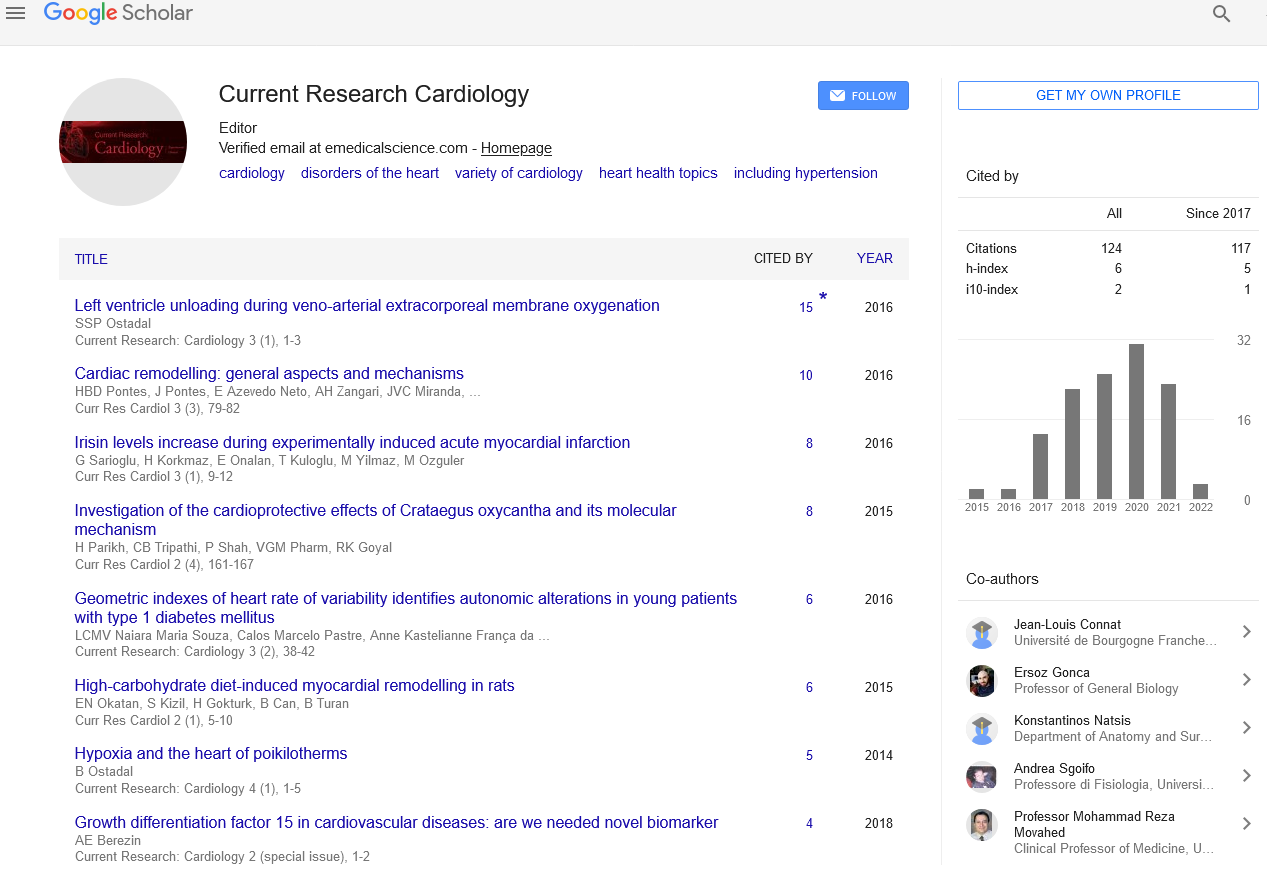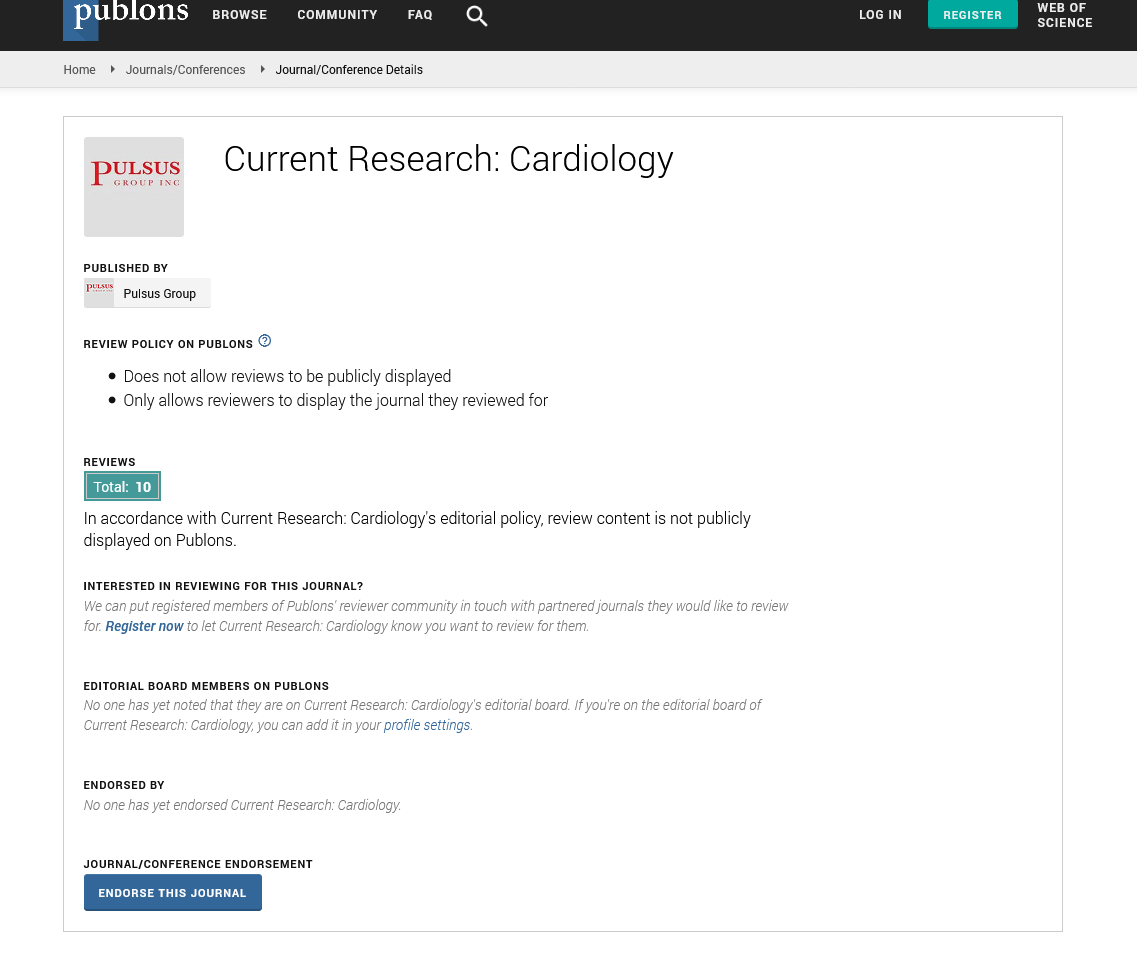The significance of WBC in circulation
Received: 02-Dec-2021 Accepted Date: Dec 16, 2021; Published: 23-Dec-2021
Citation: Jeger P. The significance of WBC in circulation. Curr Res Cardiol. 2021;8(5):4.
This open-access article is distributed under the terms of the Creative Commons Attribution Non-Commercial License (CC BY-NC) (http://creativecommons.org/licenses/by-nc/4.0/), which permits reuse, distribution and reproduction of the article, provided that the original work is properly cited and the reuse is restricted to noncommercial purposes. For commercial reuse, contact reprints@pulsus.com
About the Study
White blood cells (WBC) also called as leukocytes are cells of the immune system that are involved in protecting the body from both infections and foreign invaders. All white blood cells are produced and derived from pluripotent cells of the bone marrow known as hematopoietic stem cells. White blood cells are found throughout the body, including the blood and lymphatic system. All white blood cells have a nucleus that distinguishes them from other blood cells, anucleated Red Blood Cells (RBCs), and platelets. Different types of white blood cells are classified in the usual way. The two pairs in the broadest category classify them either by structure (granulocytes or non-granulocytes) or cell lineage (bone marrow cells or lymphocytes). These broadest categories can be further subdivided into five major types: neutrophils, eosinophils (eosinophils), basophils, lymphocytes, and monocytes.
These types have different physical and functional characteristics. Monocytes and neutrophils are phagocytic and further classified into many subtypes. For example, among lymphocytes are B cells (named after sac or bone marrow cells), T cells (named after thymocytes), and natural killer cells. White blood cells are part of the body's immune system. They help the body fight infections and other illnesses. The types of white blood cells are granulocytes (neutrophils, eosinophils, basophils), monocytes, and lymphocytes (T cells and B cells). Checking the white blood cell count in the blood is usually part of a Complete Blood Cell (CBC) test. It can be used to check for conditions such as infections, inflammation, allergies and leukemia also called white blood cells and WBC. White blood cells make up only about 1% of your blood, but their effects are enormous. White blood cells are also called white blood cells. They protect you from illness and frailty. Think of white blood cells as immune cells. In a sense, they are always in a state of war. They flow through your bloodstream and fight viruses, bacteria, and other foreign invaders that threaten your health.
When your body is suffering and certain areas are attacked, white blood cells rush to destroy harmful substances and prevent illness. White blood cells are made in the bone marrow. They are stored in your blood and lymphoid tissue. Some white blood cells, called neutrophils, have a short lifespan of less than a day, so they are always made by your bone marrow.
White blood cell count can be low for a number of reasons. This includes when something is destroying the cells more quickly than the body can replenish them or when the bone marrow stops making enough white blood cells to keep you healthy.
When your white blood cell count is low, you are at great risk for any illness or infection, which can spiral into a serious health threat. A healthcare provider can do a blood test to see whether your white blood cell count is normal. If your count is too low or too high, you may have a white blood cell disorder. Many illnesses and symptoms can affect your white blood cell count, including: Immune weakness: This is often caused by diseases such as HIV/AIDS and cancer treatment.
Cancer treatments such as chemotherapy and radiation can destroy white blood cells and pose a risk of infection. Infection: Above average white blood cell counts usually indicate that there is some kind of infection. White blood cells multiply and destroy bacteria and viruses. Myelodysplastic Syndrome: This condition causes abnormal production of blood cells. These include white blood cells in the bone marrow.
Blood cancer: Cancers such as leukemia and lymphoma can cause uncontrolled growth of abnormal types of blood cells in the bone marrow. This greatly increases the risk of infection and severe bleeding. Myeloproliferative disorders: This disorder refers to a variety of cond itions that cause the overproduction of immature blood cells. This can lead to an unhealthy balance of all types of blood cells in the bone marrow, which can lead to too many or too few white blood cells in the blood. Drugs: Some drugs can increa se or decrease the number of white blood cells in the body.






